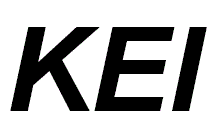PIPELINE ASSET MANAGEMENT
Pipeline Asset Managment includes the planning, diagnostics, cleaning and trenchless rehab methods of subsurface pipelines.



PIPELINE DIAGNOSTICS & REHABILITATION
As part of the low-demand season the water plant shuts down for maintenance. Part of this work included draining the 36-inch PCCP transmission main that pumped finished water from the pump room to the distribution system. The condition of the pipe was unknown as there were no known inspections of these pipes since they were installed in 1955. A visual and sounding condition assessment inspection was performed prior to putting the pipes back into service. This was a high consequence of failure asset as the sole main that transmitted finished water from the plant under 180 psi operating pressure. The pipeline also traversed right next to the building foundation and under the electrical transformer pad. From the inspection it was assessed that most of the pipe was sound, and in good condition, except for one severely deteriorated joint. Repair alternatives were evaluated and rehabilitation of a 32-ft section using the carbon fiber system was considered the most viable option. Within less than a month the pipe was inspected, repaired and put back into service. Project required administrative and technical requirements to manage this project. Plans were developed for the inspection and then for the emergency carbon fiber repair as well as all the safety plans necessary for entry into a confined space. Because this pipeline was a critical asset in the operation of the plant, it was required that all this work be accomplished before the fall demand in water increased.
PIPELINE O&M
The project consisted of surveying, inspecting and cleaning 4400 feet of dual, 48-inch ductile iron pipe mains that transmit water from the pre-sedimentation basins, under the Road and to the treatment gallery. The pipeline had accumulated excessive lime scale around the entire circumference of the pipe. Depositions were as thick as 24 inches in sections and was impeding high demand production rates.
Prior to the cleaning phase, draining the pipe and surveying of the pipeline was required. Over a 2-day period the pipelines were pumped down and drained so that enough water was removed to do a manned survey inspection of several lengths of the pipeline that had never been previously inspected. The survey included locating the precise location of the pipeline route and the buried manholes and was performed during the inspection using surveying transmitter capsules in the pipeline and electronic locaters on the surface. Thickness of the lime scale deposits were also measured during this work. Because sections of the pipeline could not be drained, River Diving and Salvage performed the final inspection and survey of the submerged length.
Once the survey and inspection were completed, high volume/pressure jetting was performed on 2000 feet of the upstream section of the pipe to remove and pulverize the lime scale. Vacuum trucks were then used to remove over 100 cubic yards of lime scale. This work had to be performed during the extreme weather conditions through Thanksgiving weekend when the plant was shut down.
